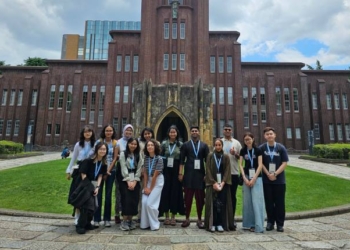New York: Researchers, including one of Indian-origin, have found evidence that an experimental drug may help prevent or slow vision loss in people with diabetes.
The results published in the Journal of Clinical Investigation, are from a study that used mouse as well as human retinal organoids and eye cell lines.
The team at Wilmer Eye Institute, Johns Hopkins Medicine focused on models of two common diabetic eye conditions: proliferative diabetic retinopathy and diabetic macular edema, both of which affect the retina — the light-sensing tissue at the back of the eye that also transmits vision signals to the brain.
In proliferative diabetic retinopathy, new blood vessels overgrow on the retina’s surface, causing bleeding or retinal detachments and profound vision loss. In diabetic macular edema, blood vessels in the eye leak fluid, leading to swelling of the central retina, damaging the retinal cells responsible for central vision.
The study showed that a compound called 32-134D prevented diabetic retinal vascular disease by decreasing levels of a protein called HIF, or hypoxia-inducible factor.
“We found that 32-134D, was remarkably well tolerated in the eyes and effectively reduced HIF levels in diseased eyes,” said Akrit Sodhi, Associate Professor of ophthalmology at the Johns Hopkins and the Wilmer Eye Institute.
To test 32-134D, researchers dosed multiple types of human retinal cell lines associated with the expression of proteins that promote blood vessel production and leakiness.
When they measured genes regulated by HIF in cells treated with 32-134D, they found that their expression had returned to near-normal levels, which is enough to halt new blood vessel creation and maintain blood vessels’ structural integrity.
Researchers also tested 32-134D in two different adult mouse models of diabetic eye disease. In both models, injections were administered into the eye.
Five days post-injection, the researchers observed diminished levels of HIF, and also saw that the drug effectively inhibited the creation of new blood vessels or blocked vessel leakage, therefore slowing progression of the animals’ eye disease.
Sodhi and his team said they also were surprised to find that 32-134D lasted in the retina at active levels for about 12 days following a single injection without causing retinal cell death or tissue wasting.
“This paper highlights how inhibiting HIF with 32-134D is not just a potentially effective therapeutic approach, but a safe one, too,” Sodhi said, stressing the need for further studies in animal models before moving to clinical trials.
(IANS)
















